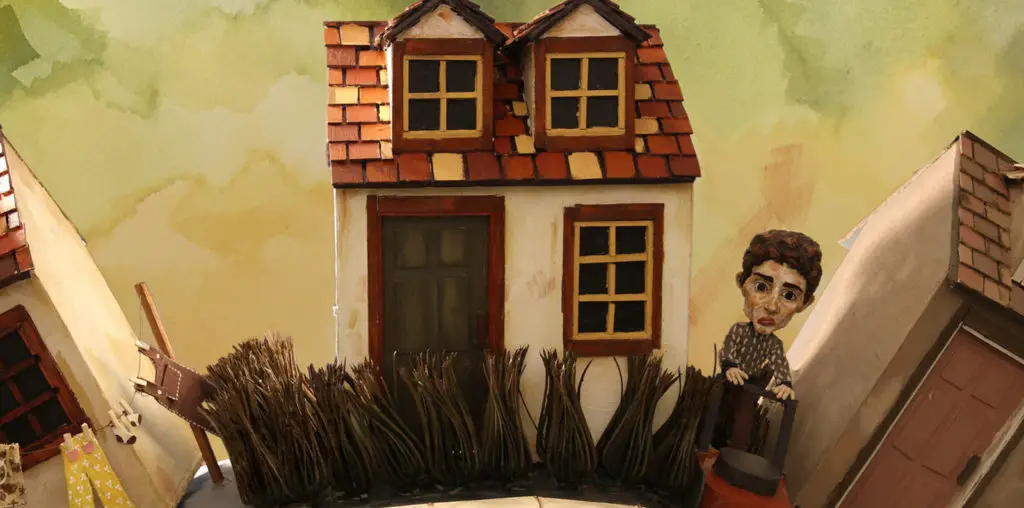
“Double Yellow Line” is in two parts. In the first part, we see the double yellow line from a highway, shot from a moving car, directly from above. Since the lines remain positioned roughly in the center of the frame, we can only discern the car’s constant motion (to the left) from the blurred grey of the asphalt and the occasional imperfections in the thicknesses of the lines. The film is extensively hand processed, so that a succession of blotches and scratches and blocks of color are always flashing across the screen at 24 frames per second. The soundtrack is a nostalgic Western song about smoking out along the open road.
The second half shows a series of acted out scenes, including a lady in a plastic pool being interrogated by a waiter with a fake moustache about a series of murders, two cowboys who have a disjointed, slow motion dialogue about a horse which “stubs her toe,” and an image of a bride and groom walking down a road. The acting is (deliberately) completely flat, slowed down nonacting. Like the first part of the film, this section is also covered by the splotches of hand processed film. The sound of a film projector, almost obliterating the nonsynced dialogue, also reminds us of the mechanics of film.
Part One of the film reminded me of various abstract films whose basic question is “What is Motion in a Motion Picture?” The surface noise created by the splotches does not create an illusion of motion, and only the barest of hints in the image of the yellow line remind us that we are seeing motion.
The highly obscure dialogue in the second half hinted at many complex, multilayered statements about Culture, Change, The American West, etc., but I admit that I am not particularly receptive to the conceptual aspects of film, so I let these things pass me by. However, I did enjoy the kooky surrealist tone, along with the suggestions of deeper meanings. In films such as this (I was reminded a bit of Mike Kuchar’s style) in which the outer form of narrative film is preserved, while systematically and deliberately removing the narrative sense, style, believability, dramatic pacing, and any sense of “professionalism,” I often find a visceral pleasure in the sheer abstractness of the form of spoken dialogue, an exuberant enjoyment of the form of storytelling, liberated from the constraints of actually telling a believable story. The actors seemed to be having as much fun as I was.
The two parts of this double portrait may or may not hang together to create a viable whole, but they provide a brief and engaging viewing and listening experience.
